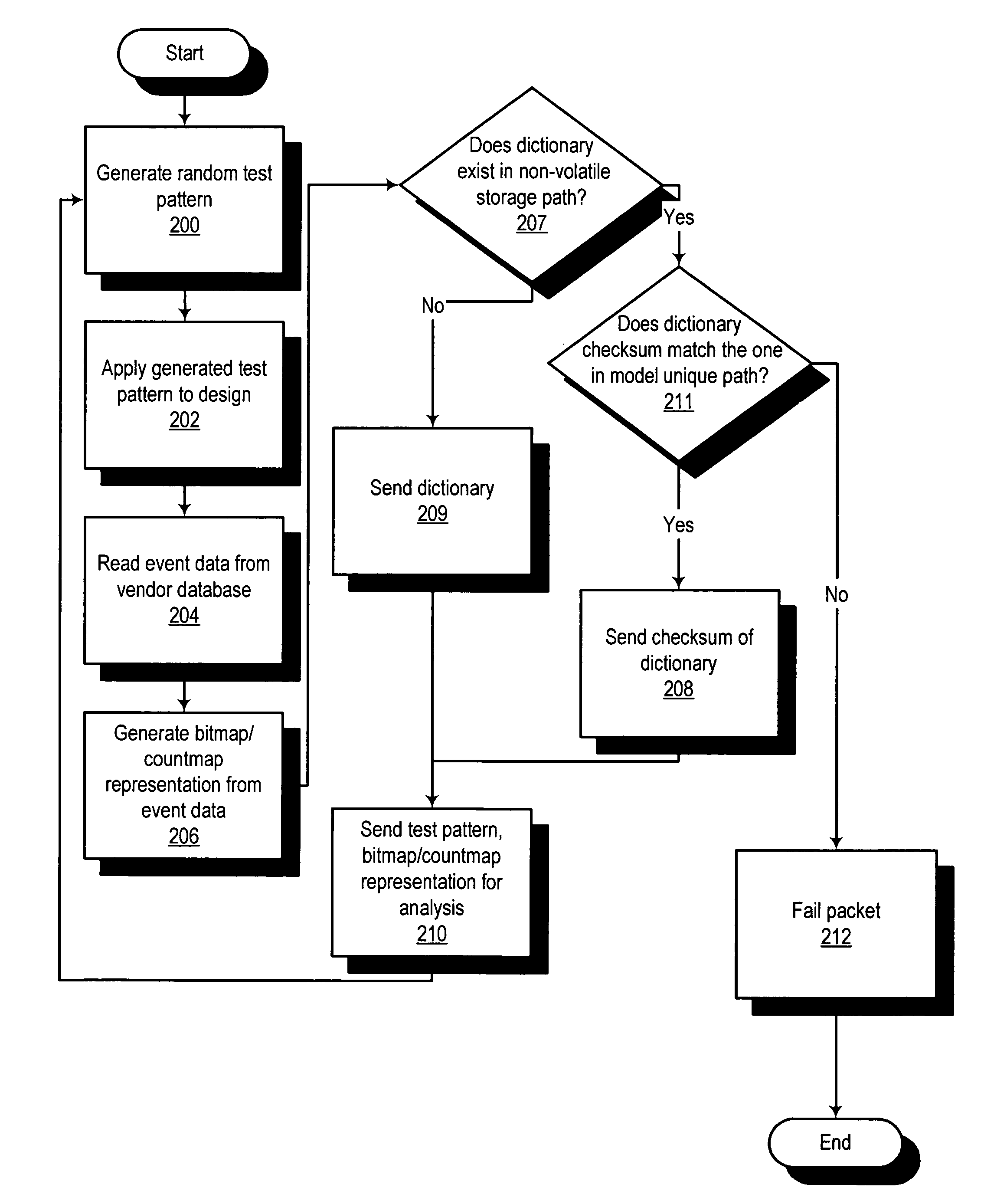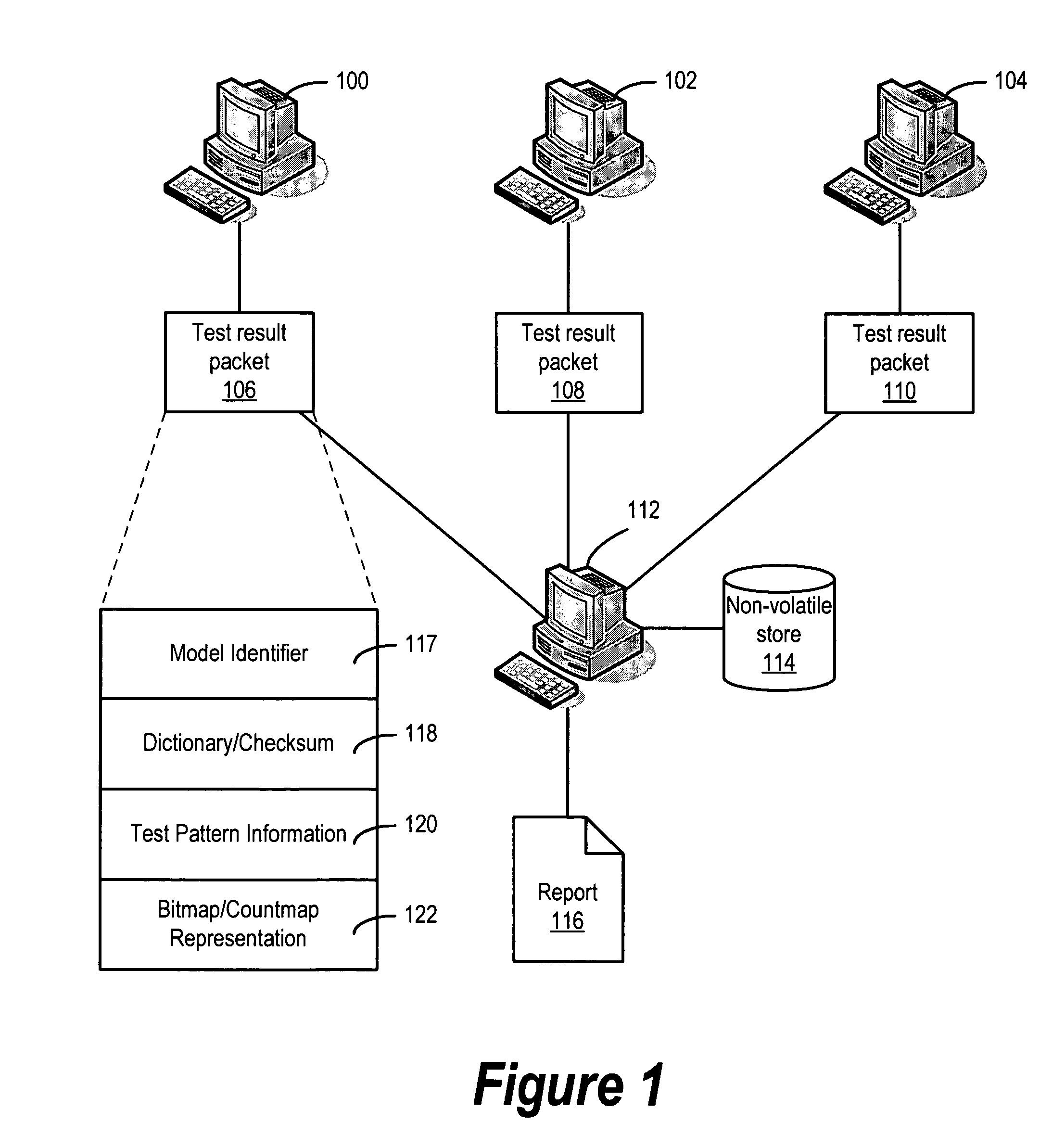Method and apparatus for performing test pattern autograding
a test pattern and autograding technology, applied in the direction of detecting faulty computer hardware, error detection/correction, instruments, etc., can solve the problems of large database, large hardware complexity, and inability of test engineers to devise test sequences manually (without computer assistance) to provoke desired behavior from the design
- Summary
- Abstract
- Description
- Claims
- Application Information
AI Technical Summary
Benefits of technology
Problems solved by technology
Method used
Image
Examples
Embodiment Construction
[0017]The following is intended to provide a detailed description of an example of the invention and should not be taken to be limiting of the invention itself. Rather, any number of variations may fall within the scope of the invention, which is defined in the claims following the description.
[0018]FIG. 1 is a diagram illustrating the distributed computing architecture utilized by a preferred embodiment of the present invention for obtaining test coverage information. One or more “frontend” computers (represented here by computers 100, 102, and 104) operate in parallel to generate random test patterns and apply them to the design under test (also referred to as the “model”) using appropriate vendor or customer tools created for this purpose. The coverage results of applying each random test pattern are assembled into a packet (packets 106, 108, and 110), which are transmitted to a central “backend” computer 112.
[0019]As shown in FIG. 1, each packet includes a number of items of dat...
PUM
 Login to View More
Login to View More Abstract
Description
Claims
Application Information
 Login to View More
Login to View More - R&D
- Intellectual Property
- Life Sciences
- Materials
- Tech Scout
- Unparalleled Data Quality
- Higher Quality Content
- 60% Fewer Hallucinations
Browse by: Latest US Patents, China's latest patents, Technical Efficacy Thesaurus, Application Domain, Technology Topic, Popular Technical Reports.
© 2025 PatSnap. All rights reserved.Legal|Privacy policy|Modern Slavery Act Transparency Statement|Sitemap|About US| Contact US: help@patsnap.com



